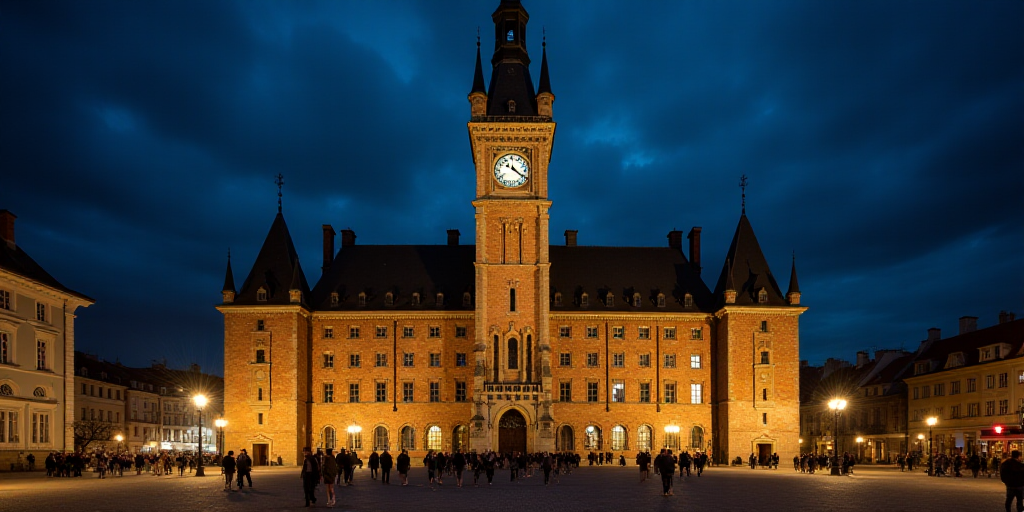A Baroque Masterpiece in Oaxaca
For over four centuries, the facade and central nave of the Temple of Santo Domingo de Guzmán in Oaxaca have stood alongside Cerro del Fortín, witnessing the multilingual and sometimes tumultuous public life of Mexico’s fifty-first city, Oaxaca de Juárez. This cantera verde structure, reddened by the sun to shades of orange and brown, houses one of Mexico’s most significant Baroque artworks.
The templo, established by the Dominican Order during the transition from the sixteenth to seventeenth centuries, has faced historical upheavals—including the War of Independence and subsequent nineteenth-century wars—when it was stripped of its habits to serve as a military barracks. It has also played a crucial role in the declaration of Oaxaca’s Historic Center as a UNESCO World Heritage site in 1979.
Illumination and Conservation
Recently, the exterior of this architectural gem was illuminated as part of a sustainable lighting project led by Spanish energy company Iberdrola and México Brilla. This initiative aims to sustainably illuminate iconic buildings and monuments across Mexico. The Temple of Santo Domingo de Guzmán became the second beneficiary in Oaxaca, following the successful illumination of the Metropolitan Cathedral of Oaxaca last year.
Roberto Lurueña, director of Varona—an international monument illumination company partnering with Iberdrola—explained the process: “We conducted drone flights to create a 3D model of the building, simulating various lighting options. After presenting our proposal to different authorities—municipal, state, and INAH (Instituto Nacional de Antropología e Historia)—we incorporated their feedback to finalize the project.”
Varona’s team installed 46 high-precision LED lights on posts surrounding the templo, integrating them into the municipal electrical system. Lurueña added, “We took the opportunity to upgrade the municipal installation, which was in poor condition.” The INAH has consistently monitored these efforts due to the templo’s status as a protected historical monument.
The illumination design ensures that the lighting remains subtle, allowing the templo to take center stage. The project’s successful completion was attributed to Oaxaca Governor Salomón Jara Cruz, alongside municipal and state authorities and Iberdrola.
Current State of the Temple
Dr. Omar Vázquez Herrera, INAH Oaxaca’s director and an anthropologist, discussed the templo’s conservation status with El Economista:
“Undoubtedly, it’s one of Oaxaca’s most iconic and beautiful places in Mexico, especially for its grandeur and historical significance.”
Vázquez Herrera continued, “Since its last major restoration in 1998, the templo has been well-maintained. However, last year, several roof sections were repaired due to water damage.”
He further mentioned, “We plan another intervention this year, focusing on stabilizing the campanario towers. In seismically active Oaxaca, religious historical monuments often suffer most from earthquakes. We have some cracks in the towers that don’t threaten stability, but it’s essential to address them to prevent further deterioration.”
The estimated cost for this intervention is around 3 million pesos through the federal Culture Secretary’s National Reconstruction Program. The roof repairs last year amounted to 4.5 million pesos.






